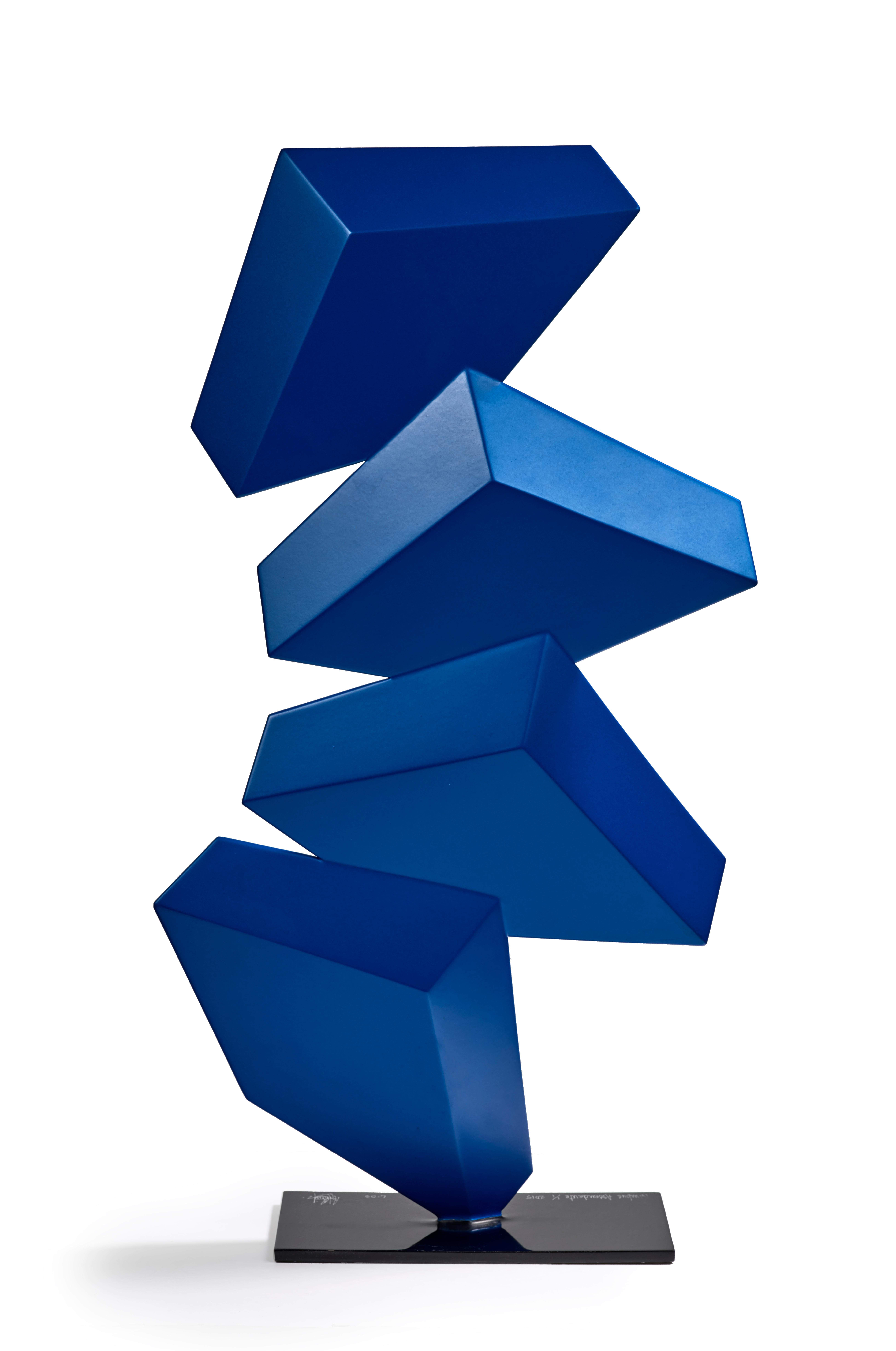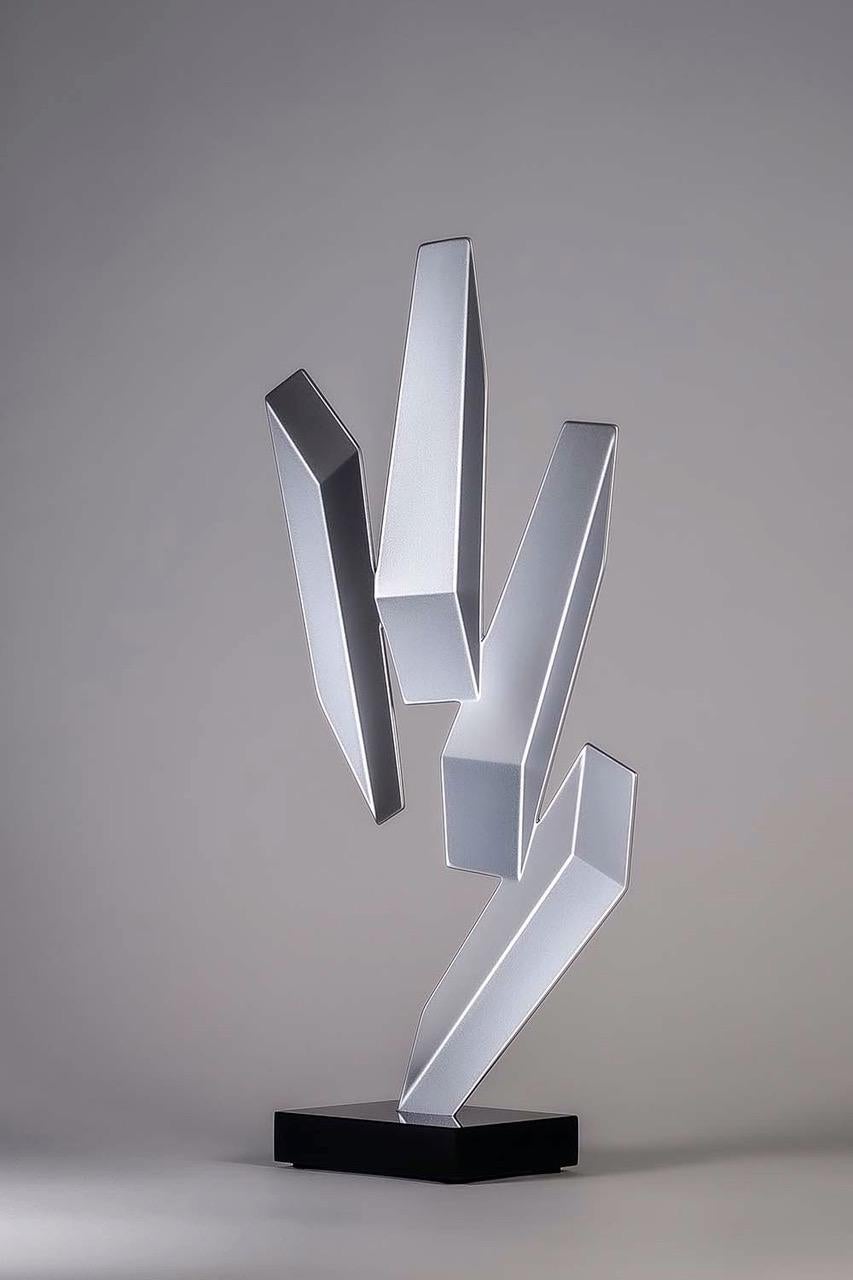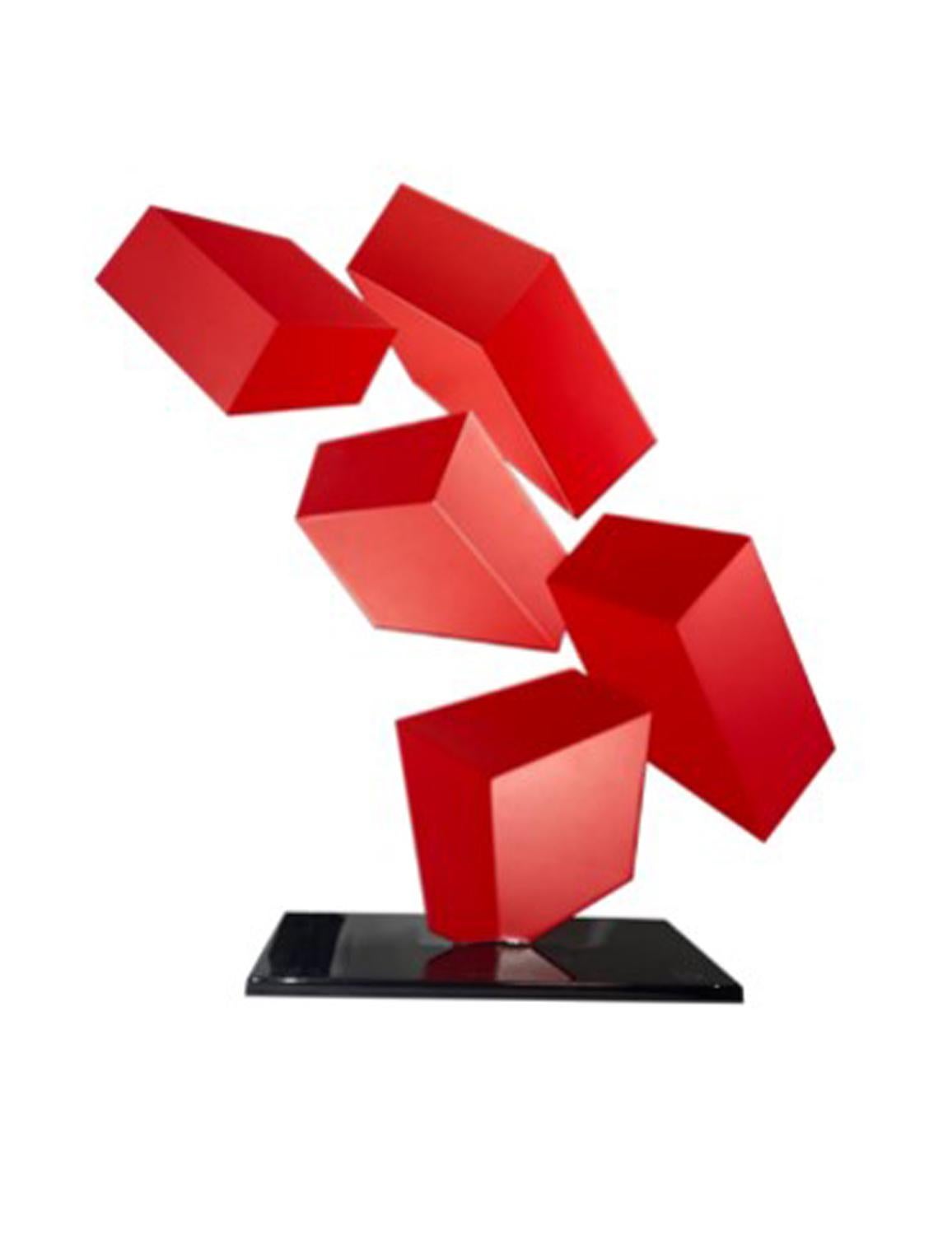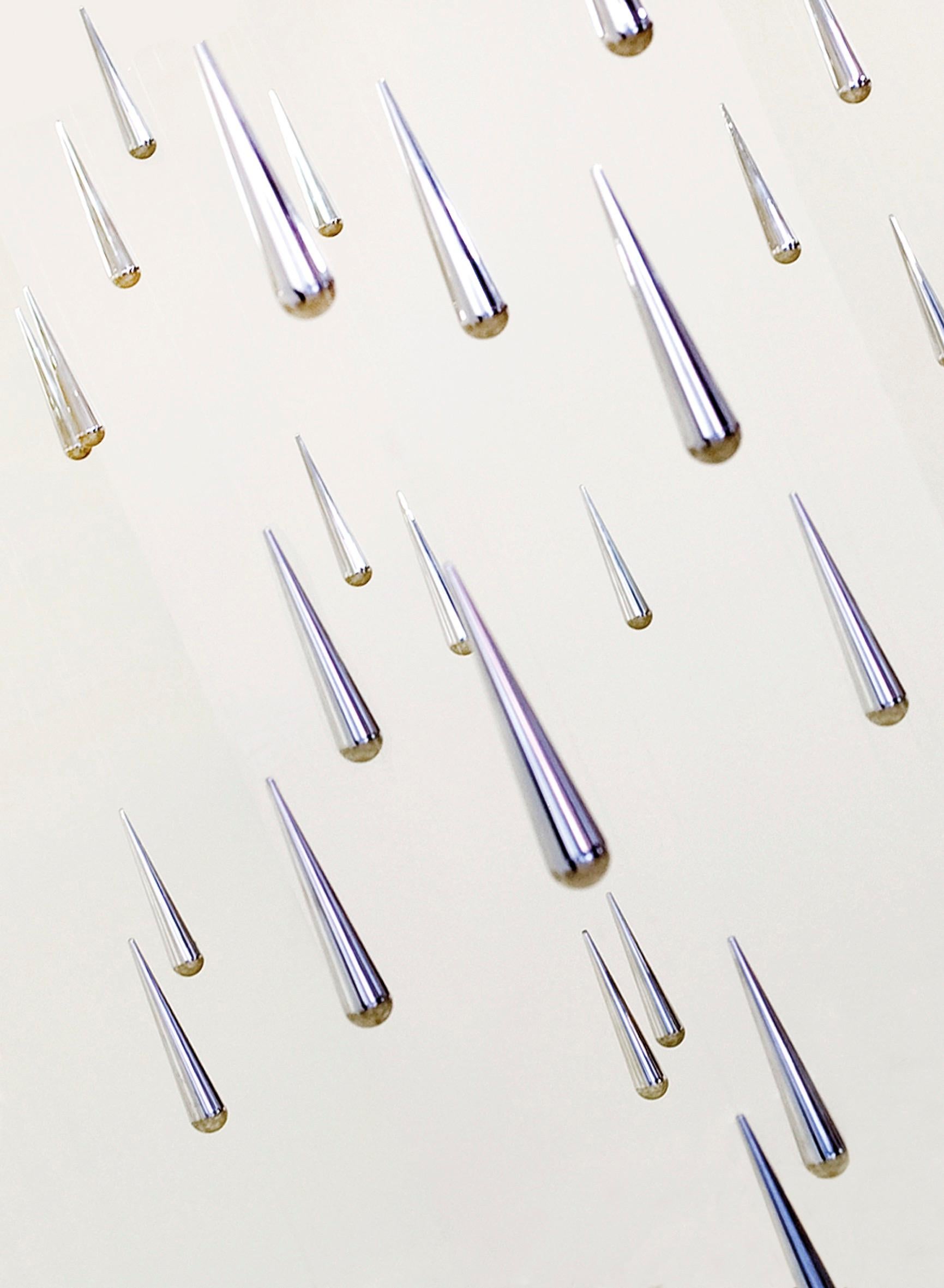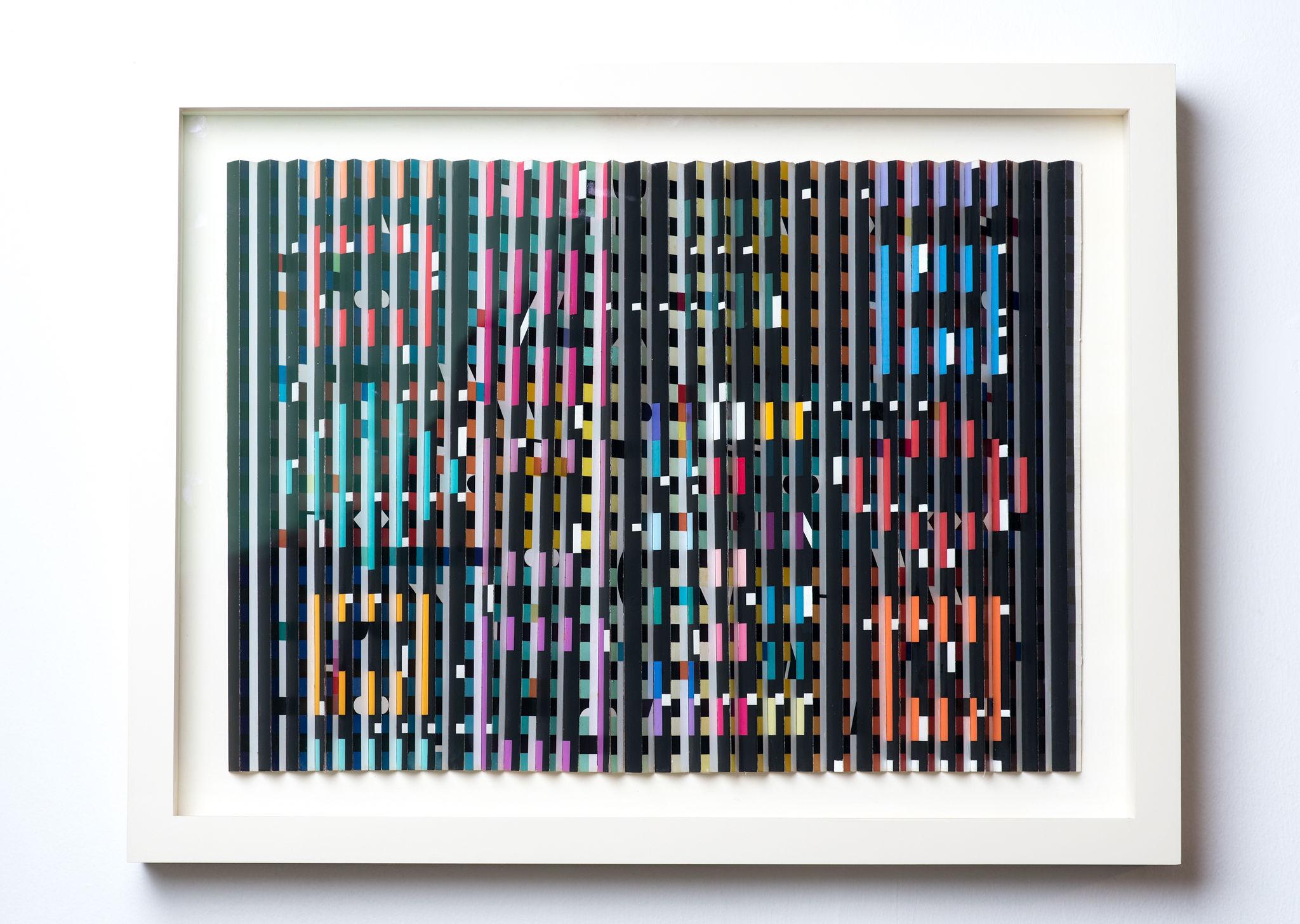Items Similar to Rafael Barrios, Movil Espiral Fractal, 2019, Aluminum, Edition 3/3
Want more images or videos?
Request additional images or videos from the seller
1 of 3
Rafael BarriosRafael Barrios, Movil Espiral Fractal, 2019, Aluminum, Edition 3/32019
2019
About the Item
Rafael Barrios
Movil Espiral Fractal (Código M597), 2019
Edition 3/3
Hand Fabricated Lacquered Aluminum
178 x 80 cm 70 x 31.4 in.
This artwork is accompanied by a certificate of authenticity directly from the artist.
RAFAEL BARRIOS is a Venezuelan artist born in 1947 in Baton Rouge, Louisiana, US. He studied Fine Arts in Canada, the United States, and Venezuela. His artistic trajectory dates back to a very early age. He studied drawing and painting at the Museo de Bellas Artes in Caracas, Venezuela, achieving his first recognition with the award “National Youth Painting” in 1963. Upon completing his basic studies in Venezuela and Canada, he received a scholarship from J. Walter Thompson International to attend the Ontario College of Art in Toronto, Canada, graduating with honors in “Pure Art” and “Communication and Design”.
He received a scholarship from New York University (US) to attend its Graduate Program for “Fine Arts” and “Monumental Sculpture Techniques”.
He was granted several national and international awards: “The Sculpture Award”, Ernesto Avellán Exhibition; the McLean Foundation Scholarship, the highest award offered by the Ontario College of Art, Canada; the “Excelentísima Diputado Pronvicial de la Frontera” Decoration, for his Monumental Sculpture titled “Tercer Horizonte”, to commemorate 500 years of America’s Discovery, in Palos de la Frontera, Huelva, Spain; “Second Prize” at the Sofia Imber Caracas Contemporary Museum’s Biennial of Visual Arts, in Venezuela; the “Conferry Award”, First Sculpture Biennial, Francisco Narváez Contemporary Art Museum, Margarita Island, Venezuela; “Artist of the Year ’95”, Etiqueta Magazine, Caracas, Venezuela; Decoration by Carupano Township, in Sucre State, Venezuela.
Throughout his carreer as an artist, Rafael Barrios has worked as Art Director for UNESCO; as Creative Consultant for “Latin Touch” cinematographic creations; as Stage Designer for Chris Von Wangenheim in Vogue and Esquire magazines, in New York, US. He was a Professor of Three-Dimensional and Advertising”,at the Neumann Design Foundation, in Caracas, Venezuela; Stage Designer for “DanzaHoy”‘s presentation in Expo-Sevilla, Spain; and Stage Designer for Hervé Leger in his “Carrouselle du Louvre” show, in Paris, France.
Many of his pieces can be found in public spaces, such as the Murals atFundación Polar, in Caracas; Art et Industry, New York; Coca-Cola International Headquarters in New York; Monumental Sculptures at Sofia Imber’s Caracas Museum of Contemporary Art; Banco Consolidado (now CorpBanca)’s Headquarters in Caracas; the Seguros Venezuela Building in Caracas; and Procter & Gamble’s Headquarters in Caracas.
Rafael Barrios has exhibited in the United States, Europe, South America, and other Latin American countries, as well as in the Middle East. His work can be found in permanent collections in the Ontario Art Gallery and the Carmen Lammana Foundation in Toronto, Canada; also in th National Art Gallery in Caracas; the Sofia Imber’s Caracas Museum of Contemporary Art; as well as in the private collections of HRH Don Juan Carlos de Borbón, King of Spain (Levitating Simetry); and the collection of HRH Gloria, Princess of Germany.
In 1973, renowned futurist Marshall McLuhan said in a lecture at the University of Toronto: “The work of Rafael Barrios is like fresh fruit for thought.” Rafael Barrios plays with shapes, altering the laws of geometry, fabling volume in space. His sculptures are characterized by breaking orthodox directionality, accessing new possibilities of perception.
Vertiginous elevations cause his virtual works to seemingly erect upon themselves, defying the laws of space, alleviating bodies that should be subject to gravity. Rafael Barrios’ works are identifiable by a set of dynamics, levity, strength, and magnetism, which is imprinted on each individual creation in order to reach the beholder’s spirit.
- Creator:Rafael Barrios (1947, American)
- Creation Year:2019
- Dimensions:Height: 70.08 in (178 cm)Width: 31.5 in (80 cm)Depth: 31.5 in (80 cm)
- Medium:
- Movement & Style:
- Period:
- Condition:
- Gallery Location:Miami, FL
- Reference Number:1stDibs: LU1613210218962
About the Seller
5.0
Vetted Seller
These experienced sellers undergo a comprehensive evaluation by our team of in-house experts.
Established in 1989
1stDibs seller since 2021
Typical response time: 1 to 2 days
- ShippingRetrieving quote...Ships From: Miami, FL
- Return PolicyA return for this item may be initiated within 14 days of delivery.
More From This SellerView All
- Carlos Medina, Rain Cylinder, 1999-2021, Spatial InterventionBy Carlos MedinaLocated in Miami, FLCarlos Medina Rain Cylinder, 1999-2021 Spatial intervention of 60 pieces Polished aluminum carving pieces and nylon Drops. 6.3 in. 16 cm ea. Price: $1...Category
2010s Kinetic Abstract Sculptures
MaterialsMetal
- Jesús Rafael Soto, Quadrato, 1974, Edition Denise René. Ed. 32/75By Jesús Rafael SotoLocated in Miami, FLJesús Rafael Soto Quadrato 1974 Edition Denise René. Ed. 32/75 Acrylic on aluminum with painted metal rods 45.7 x 40 x 32 cm 17.9 x 15.7 x 12.5 in. Jesús Rafael Soto (1923 - 2005) ...Category
1970s Kinetic Abstract Sculptures
MaterialsMixed Media
- Maqueta Armonía de Volúmenes y Espacios, La HoyadaLocated in Miami, FLMaqueta Armonía de Volúmenes y Espacios -La Hoyada- BMPC-002, 1980(1982) Edition /25 Bronze 48 x 37 x 26 cm 18.8 x 14.5 x 10.2 in. ABOUT THE ARTIST Narváez was born in Porlamar, Venezuela, in 1905; he was the fifth son of eleven siblings; his parents were Jose Lorenzo Narváez and Vicenta Rivera. Don José Lorenzo, a multifaceted and creative man, sowed the seed of creativity in his son. “My father did not fit in with his fantasies of cabinetmaker, bricklayer, master builder, and self-taught architect.”1 From an early age, Francis was led to the artistic activity, he traced, carved, made replicas of the furniture and the saints restored by his father. In 1920 he obtained his first professional assignment, a San Rafael for the Church of Carupano, and, in 1922, his father authorized him to travel to Caracas to pursue his studies as an artist. He studied at the atelier of Marcos Castillo, at of the Angel Cabre y Magriña and at the Academy of Fine Arts in Caracas, where he was introduced to the painters and intellectuals of the time. In 1928 he presented his first solo exhibition at the Club Venezuela. With the money raised from the sale of the works and the support of Monsignor Sosa, and the Ministers Centeno Grau and Arcaya, he studied in Paris on a scholarship. Once there, he enrolled at the Académie Julian, where Tito Salas, Cristóbal Rojas and Arturo Michelena had also studied. It was in Paris where, unable to work in wood, he turned to stone carving. “In Paris, I didn’t have wood, so I carved a lot in stone (…), when there were demolitions I purchased chunks of stone, I would take them to the workshop and carve them.”2 His first attempts at volumetric sculptures and painting in plain colours, linked to the thematic of American miscegenation and Creole reality, can be traced back to that first trip to Paris. During his stay in the French city, Arturo Uslar Pietri, Alfredo Boulton, and Finita Vallenilla supported the artist both financially and logistically, and in February of 1930, the trio of friends arranged another exhibition for him at the Club Venezuela. Narváez describes his exhibition as follows: “(…) in it I feel that the sculptural work is more my own, done with more assurance, a response to my pursuit of large planes, stylisation and synthesis.”3 By then, as Boulton himself noted in his book about the artist, Narvaez departed from most of the artistic traditions that prevailed by that time in Venezuela. In 1931 he returned to Caracas and established his atelier at the Barrio Obrero in Catia. The atelier became the hub of the intellectual life of the time. “In those years, the atelier of Francisco Narváez was the hub of the greatest Venezuelan hope. Nothing comparable to it can be found either before or since.”4 From that year onwards, exhibitions, projects, trips, and awards we multiplied. He was awarded the President of the Republic of Venezuela Prize, the National Sculpture Prize of the 1st Official Venezuelan Art Salon, and the John Boulton Prize of the 3rd Annual Venezuelan Art Salon; for the Military Academy, he produced a spectacular relief entitled La Patria. In 1945, commissioned by the architect Carlos Raúl Villanueva, he produced two groups of sculptures known as Las Toninas, both located in the O’Leary Square. There, as he himself states, he incorporates some baroque patterns into the figures to the source itself: “It is a work of balance between the decorative requirements and the sculpture of planes and angles.”5 In 1948 he was awarded the National Painting Prize. In the same year, he was called upon by the architect Carlos Raul Villanueva to participate in the project for the arts integration in the Universidad Central de Venezuela. Francisco Narváez’s public output continued with works such as the statue of Fermín Toro, La Educación, La Ciencia, three murals (produced by María Luisa Tovar) for the Instituto de Medicina Experimental, El Cristo; el Atleta, the equestrian statue of General Rafael Urdaneta. In 1953 he was appointed Director of the School of Plastic and Applied Arts, and in July of the same year, he exhibited “Francisco Narváez, Maderas, Piedras y Bronces” (Francisco Narváez, Woods, Stones and Bronzes) at the Museum of Fine Arts. Narváez is, unquestionably, one of the great Venezuelan sculptors, his work goes through various stages and interests; as the art world evolves, the artist does not remain in his initial scopes of work. His creations are not imposed by the prevailing trends or fashion but do evolve by experimenting with new materials and interests. When one peruses the artist’s lengthy list of exhibitions, commissions, and awards, it is worth remembering the Narvaez who embark on his career as a child and who, overcoming obstacles, knew how to make the most of his curiosity. He did not settle for living off his successes. He did not remain stagnant as many creators of his environment did. Narvaez managed to understand the changes in the history of art around him. We must not overlook the fact that Francisco Narvaez is an artist amid all the changes occurring in the art world. He moves from the classics to the great transformations in the art world. It is the Europe of Picasso, Braque, Arp. He observes, he is aware of what is happening in the centres of the world of art, but between his craft and his sensitivity, the result is NARVAEZ, his stamp, and his identity. Francisco Narváez comes from tradition, and his first stage is linked to the classics, to the exploration of his heritage, but always with his very own language. Throughout his prolific career, he knew how to remain true to himself, without disregarding the influences of his surroundings or his artistic interests: his ability as a sculptor, his selection of materials, whether they were wood, stone or bronze; his choice of the subject of his work…His mastery and great craftsmanship are a constant that over time have made him a leading player in the history of contemporary Venezuelan and world art. From his beginnings, no subject was foreign to him. His paintings, drawings, aquarelles, and sketches are testimony to his prolific output. Among his themes are portraits, our traditions, still lifes, and landscapes. Narváez is an artist who represents his time. Later, he evolved towards purer and simpler forms, abandoning figurative art for short periods. In 1956 he declared to the newspaper El Nacional: “Every day I am freeing myself, it is a soul that frees itself from the ephemeral wrappings of the circumstantial always, as well as from the inevitable weight of the anecdote. This second stage of my work is remarkably close to abstractionism, even if there are still certain figures or figurations in the sculptures that I will shortly be showing. However, pure, and absolute abstractionism, it will treat the form itself as the sole reason for its existence on the plane of artistic excellence.”6 The artistic development was his professional life. Each period of his life as an artist, he went one step further, searching, solving, seeing plenty of things and understanding how diverse expressions were transforming themselves. His hands followed his gaze and his mind, always inquisitive. He added movement to the volumes. Arturo Uslar Pietri, “Formas Nuevas”, Cromotip editions, 1956 “Francisco Narváez is a path: the path that Venezuelan sculpture...Category
1980s Abstract Abstract Sculptures
MaterialsBronze
- Francisco Narváez, Forma, 1956, Bronze, Edition of 25, 30 x 8 x 10 cmLocated in Miami, FLFrancisco Narváez Forma (BFM-049), 1956 Bronze (1970) Edition of 25 30 x 8 x 10 cm 11.8 x 3.1 x 3.9 in. LITTERATURE Registro General de la obra de...Category
1950s Abstract Abstract Sculptures
MaterialsBronze
- Edgar Negret El Sol Rojo, 1985, Painted Aluminum, 250 x 244 x 80 cmLocated in Miami, FLEdgar Negret El Sol Rojo, 1985 Painted Aluminum 250 x 244 x 80 cm 98.4 x 96.1 x 31.5 in. Carlos Jiménez Moreno, Negret Escultor: Homenaje. Villegas Edito...Category
1980s Abstract Geometric Abstract Sculptures
MaterialsMetal
- Francisco Narváez, Volumen, 1974, Bronze, Ed. 25, 15 x 20.5 x 10.5 cmLocated in Miami, FLFrancisco Narváez Volumen (BVM-002), 1974 Bronze (1974) Edition of 25 15 x 20.5 x 10.5 cm 5.9 x 8 x 4.1 in. LITTERATURE El Proceso Creativo en Narva...Category
1970s Abstract Abstract Sculptures
MaterialsBronze
You May Also Like
- Nimbus AscendenteBy Rafael BarriosLocated in PARIS, FR" Nimbus Ascendente ", 2015 Unique 69 x 38 cm Rafael Barrios, sculptor, and founder of the Virtualism movement. From the beginning, his work has been ...Category
21st Century and Contemporary Kinetic Abstract Sculptures
MaterialsSteel
- Levitation IIIBy Rafael BarriosLocated in PARIS, FR" Levitation III ", 2019 Edition: 18/20 40 x 19 x 8 cm Rafael Barrios, sculptor, and founder of the Virtualism movement. From the beginning, his work...Category
21st Century and Contemporary Kinetic Abstract Sculptures
MaterialsSteel
- Levitation IVBy Rafael BarriosLocated in PARIS, FR" Levitation IV ", 2019 Edition: /20 + AP 40 x 19 x 8 cm Rafael Barrios, sculptor, and founder of the Virtualism movement. From the beginning, his w...Category
21st Century and Contemporary Kinetic Abstract Sculptures
MaterialsSteel
- FlightBy Rafael BarriosLocated in PARIS, FR" Flight ", 2015 Edition: AP 58 x 53 cm Rafael Barrios, sculptor, and founder of the Virtualism movement. From the beginning, his work has been charac...Category
21st Century and Contemporary Kinetic Abstract Sculptures
MaterialsSteel
- Yaacov Agam, Midnight Light, Kinetic work, polymorph.By Yaacov AgamLocated in Tel Aviv, ILYaacov Agam, Midnight Light, polymorph, Kinetic art, Colored work, International artist, Israeli artist, Israeli art. Yaacov Agam’s polymorph is a unique example of geometric and kin...Category
Late 20th Century Kinetic Abstract Sculptures
MaterialsMetal
- Aero #4By Moto OhtakeLocated in Napa, CAOn display at Solage Moto Ohtake views kinetic sculpture as a learning process in which to explore the mechanics and structural engineering of forms in motion. His playful series of...Category
21st Century and Contemporary Kinetic Abstract Sculptures
MaterialsStainless Steel
Recently Viewed
View AllMore Ways To Browse
Monumental Lacquer
Mural Metal
70s Abstract Sculpture
Kinetic Metal Sculpture
Latin X Sculpture
Kinetic Sculpures
Monumental Abstract Metal Sculpture
Venezuela Sculpture
Fractal Collection
King Von
Lacquer 80s
Lacquer 80s
Fractal Sculpture
J Marshall
Gambling Painting
Sevilla Art
Paintings By Ernesto
Sevilla Painting
